Hebrew MANUAL Israel BOFORS L/70 40mm ANTI AIRCRAFT GUN Guide IDF ZAHAL BOOK
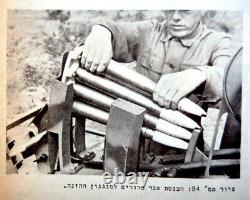
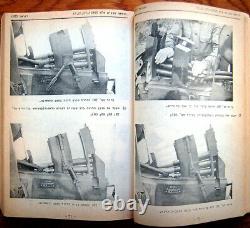
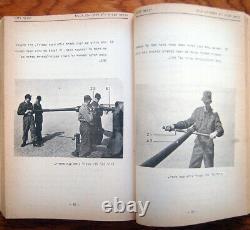
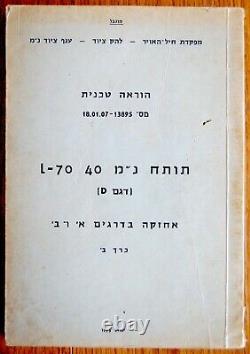
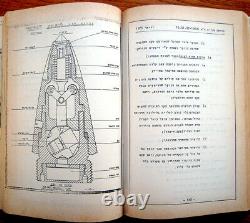
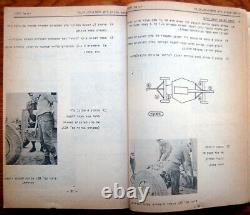
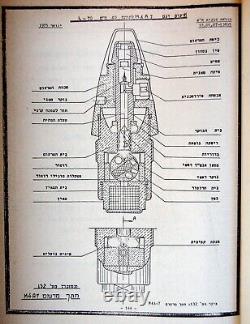
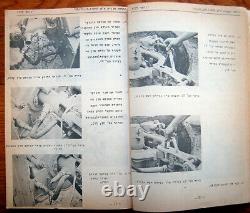
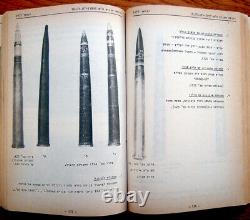
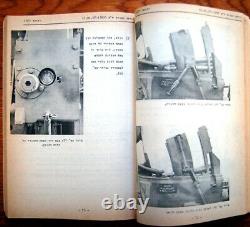
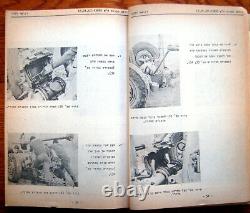
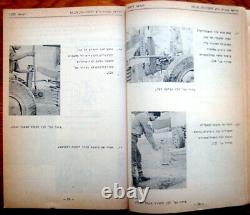


DESCRIPTION : This UNIQUE, EXTREMELY RARE and ONE OF ITS KIND book, Being an illustrated Hebrew MANUAL was published IN 1975 (Fully dated). The extensive RICHLY ILLUSTRATED MANUAL book was originaly published in 1975 Israel by the IDF - ZAHAL (Israel Defense Forces), The AIRFORCE wing for the usage of the SOLDIERS - WARRIORS. Throughout i llustrated and photographed. Around 9.0 x 6.5.250 throughout illustrated pp. Cover very slightly stained and worn. Very nicely preserved ULTRA RARE copy. (Pls look at scan for accurate AS IS images) Will be sent inside a protective rigid packaging. AUTHENTICITY : This is an ORIGINAL vintage 1975. " ANTI-AIRCRAFT L-70 40mm MODEL D ". MANUAL - GUIDE book , OFFICIAL military PUBLISHING, NOT a reproduction or a reprint , It holds a life long GUARANTEE for its AUTHENTICITY and ORIGINALITY.
Will be sent inside a protective packaging. It was one of the most popular medium-weight anti-aircraft systems during World War II, used by most of the western Allies as well as some captured systems being used by the Axis powers. A small number of these weapons remain in service to this day, and saw action as late as the Persian Gulf War.
In the post-war era, the original design was not suitable for action against jet-powered aircraft, so Bofors introduced a new model of significantly more power, the 40 mm L/70. In spite of sharing almost nothing with the original design other than the calibre and the distinctive conical flash hider, this weapon is also widely known simply as "the Bofors". Although not as popular as the original L/60 model, the L/70 remains in service, especially as a multi-purpose weapon for light armoured vehicles, as on the CV 90. Bofors has been part of BAE Systems AB since March 2005. Contents 1 Development 2 British versions 2.1 Army and RAF Regiment versions 2.2 Naval versions 3 U.The Navy approached Bofors about the development of a more capable replacement. Bofors signed a contract in late 1928. Bofors produced a gun that was a smaller version of a 57 mm (6-pounder) semi-automatic gun developed as an anti-torpedo boat weapon in the late 19th century by Finspång. Their first test gun was a re-barreled Nordenfelt version of the Finspång gun, to which was added a semi-automatic loading mechanism.
Testing of this gun in 1929 demonstrated that a problem existed feeding the weapon in order to maintain a reasonable rate of fire. A mechanism that was strong enough to handle the stresses of moving the large round was too heavy to move quickly enough to fire rapidly.
One attempt to solve this problem used zinc shell cases that burned up when fired. This proved to leave heavy zinc deposits in the barrel, and had to be abandoned. In the summer of 1930 experiments were made with a new test gun that did away with controlled feed and instead flicked the spent casing out the rear whereafter a second mechanism reloaded the gun by "throwing" a fresh round from the magazine into the open breech. This seemed to be the solution they needed, improving firing rates to an acceptable level, and the work on a prototype commenced soon after.
Krupp engineers started the process of updating the Bofors factories to use modern equipment and metallurgy, but the 40 mm project was kept secret. This gun mounts the original reflector sights, and lacks the armor found on British examples. The prototype was completed and fired in November 1931, and by the middle of the month it was firing strings of two and three rounds. Changes to the feed mechanism were all that remained, and by the end of the year it was operating at 130 rounds per minute.
Continued development was needed to turn it into a weapon suitable for production, which was completed in October 1933. Since acceptance trials had been passed the year before, this became known as the "40 mm akan M/32". Most forces referred to it as the "Bofors 40 mm L/60", although the barrel was actually 56.25 calibres in length, not the 60 calibres that the name implies. [citation needed] The gun fired a 900 g (2.0 lb) high explosive 40 × 311R (rimmed) shell at 2,960 ft/s (900 m/s).[5] The rate of fire was normally about 120 rounds per minute (2.0 rounds per second), which improved slightly when the barrels were closer to the horizontal as gravity assisted the feeding from the top-mounted magazine. In practice firing rates were closer to 80-100 rpm (1.3-1.7 rounds per second), as the rounds were fed into the breech from four round clips which had to be replaced by hand. The maximum attainable ceiling was 7,200 m (23,600 ft), but the practical maximum was about 3,800 m (12,500 ft).
The gun was provided with an advanced sighting system. The trainer and layer were both provided with reflector sights for aiming, while a third crew-member standing behind them "adjusted" for lead using a simple mechanical computer. Power for the sights was supplied from a 6V battery. British 40mm L/60 includes the British-designed Stiffkey Sight, being operated by the gun layer standing on the right. The layer operates the trapeze seen above the sights, moving them to adjust for lead.
The loader stands to the layer's left, and the two trainer/aimers are sitting on either side of the gun. In spite of the successful development, the Swedish Navy changed its mind and decided it needed a smaller hand-traversed weapon of 13 mm-25 mm size, and tested various designs from foreign suppliers. With the 40 mm well along in development, Bofors offered a 25 mm version in 1932, which was eventually selected as the Bofors 25 mm M/32. The barrel was shorter at 42 calibers long, with the effect of reducing the muzzle velocity to about 700 m/s (2,300 ft/s). When not in use, the gun was pointed directly up and retracted into a watertight cylinder. The only known submarines that used this arrangement was the Sjölejonet-class boats.The guns were later removed as the subs were modified with streamlined conning towers. The first order for the "real" L/60 was made by the Dutch Navy, who ordered five twin-gun mounts for the cruiser De Ruyter in August 1934. These guns were stabilized using the Hazemeyer mount, in which one set of layers aimed the gun, while a second manually stabilized the platform the gun sat on.
All five mounts were operated by one fire control system. Bofors also developed a towable carriage which they displayed in April 1935 at a show in Belgium.
This mount allowed the gun to be fired from the carriage with no setup required, although with limited accuracy. If time was available for setup, the gunners used the tow-bar and muzzle lock as levers, raising the wheels off the ground and thereby lowering the gun onto supporting pads. Two additional legs folded out to the sides, and the platform was then leveled with hand cranks.
The entire setup process could be completed in under a minute. Orders for the land based versions were immediate, starting with an order for eight weapons from Belgium in August 1935, and followed by a flood of orders from other forces including Poland, Norway, and Finland. [6] It was accepted into the Swedish Army the next year, known as the "40 mm lvakan m/36", the lower-case "m" indicating an Army model as opposed to the capital "M" for Navy.The Swedish Navy adopted the weapon as the m/36 in hand-worked single air-cooled, and power operated twin water-cooled version. A twin air-cooled mounting, probably hand-worked was also used by the navies of Sweden and Argentina and a twin air-cooled wet mounting was developed for Polish submarines. British versions[edit] Army and RAF Regiment versions[edit] Q.
1 displayed at CFB Borden. This example mounts a Stiffkey Sight, and displays the additional armor protecting the gunners. Bofors gun on the Ley-class minehunter HMS Isis (1978) The British Army had first examined the weapon when they received a number of Polish-built examples in 1937 for testing, known as the "QF 40 mm Mark I" (QF standing for "quick firing"), or "Mark I/2" after a minor change to the flash hider.
A licence was acquired and the gun was converted from metric to imperial measurements. They also made numerous changes to the design to make it more suitable for mass production, as the original Bofors design was intended to be hand-assembled, and many parts were labeled "file to fit on assembly", requiring many man-hours of work to complete. Testing showed that aiming the guns against high-speed aircraft was a serious problem. Although the gun could be trained quickly, aiming accurately while doing so proved difficult.
In order to address this, the British introduced a complex mechanical analogue computer, the Kerrison Director, which drove the laying electrically. A three-man team operated the director simply by pointing it at the target whilst dialing in estimates for speed, range, and various atmospheric conditions. The director then aimed the guns directly through powered mounts, as the gunners loaded the clips. This eliminated the need for the lead-correcting reflector sights, which were replaced with a backup system consisting of a simple ring-and-post sight known as a "pancake". In this form, the "QF 40 mm Mark III" (Mk II was a designation used for a Vickers "pom-pom"), became the Army's standard light AA (anti-aircraft) weapon, operating alongside their 3-inch and 3.7-inch heavy weapons.
The gun was considered so important to the defence of Britain after the fall of France in 1940 that a movie, The Gun, was produced to encourage machinists to work harder and complete more of them. British production started slowly: by September 1939 only 233 equipments had been produced; but by the end of the war total production from British, Canadian and Australian factories was over 19,000. Peak production year was 1942 when British factories produced 5,025 and Canadian factories produced 1,311.
[7] Bofors L/60 sighting system, left side. In combat it was found that the Kerrison was difficult to set up to use in many situations, as well as making logistics more complex due to the need to keep its electrical generator supplied with fuel. In most engagements only the pancake sights were used, without any form of correction, making the British versions less capable than those used by other forces. Eventually an anti-aircraft gunnery school on the range at Stiffkey on the Norfolk coast delivered a workable solution, a trapeze-like arrangement that moved the pancake sights to offer lead correction, operated by a new crew-member standing behind the left-hand layer. The "Stiffkey Sight" was sent out to units in 1943, arriving in Canadian units in the midst of the Battle of the Aleutian Islands. A final wartime change to the elevation mechanism resulted in the "QF 40 mm Mark XII".They also designed a much lighter two-wheeled carriage for airborne use. The Army also experimented with various self-propelled anti-aircraft systems based on various tank chassis. Changes to the breech for this role created the "QF 40 mm Mark VI", which was used on the Crusader to produce the Crusader III AA Mark I.
The main self-propelled version of the Bofors used the gun set on the chassis of a Morris Commercial four-wheel drive lorry, this was known as the "Carrier, SP, 4x4 40mm, AA (Bofors) 30cwt". Such guns were used in support of Army divisions to provide swift protection against air attack without the need to unlimber. They saw service in North West Europe, where six SP Bofors of 92nd (Loyals) Light Anti-Aircraft Regiment, Royal Artillery, landed with the British 3rd Infantry Division on Sword Beach on D-Day to protect the vital bridges over the Caen Canal and Orne River (Pegasus Bridge and Horsa Bridge), shooting down 17 German planes.Later in the campaign, SP Bofors were used extensively for ground shoots as well as in an anti-aircraft role. In British army service the Bofors found a highly specialised role: during the North Africa Campaign at the Second Battle of El Alamein, they were used to fire tracer horizontally to mark safe paths for units through the German minefields. This practice was further developed during operations in North-West Europe, where bursts of colour-coded tracer were used to define the axis of advance of the different formations in large-scale night attacks. The formation of the RAF Regiment in February 1942 (in response to the Army's failure to defend airfields on Crete, which resulted in strategic defeat on the island to numerically inferior German forces) signalled the transfer of responsibility for defending airfields to the RAF from the Army.
This included low-level air defence and the Bofors L60-to the same design as the Army version-was the principal weapon for the RAF Regiment's Light Anti-Aircraft squadrons in North Africa, Malta, Italy, the Balkans, the UK (including the allocation of fifty-two squadrons to Operation DIVER), and North Western Europe (from D-Day through to the cessation of hostilities). No 2875 Squadron RAF Regiment, employing the L60, became the first unit to shoot down a jet aircraft, a Me 262, with ground-based anti-aircraft fire, at Helmond in the Netherlands on 28 November 1944.
Although the Allied air forces had achieved air superiority after D-Day, forward airfields continued to be high priority targets for the Luftwaffe when the opportunity presented and this ensured that the RAF Regiment's L60s continued to be heavily used. For example, during the Ardennes Offensive, RAF Regiment Light Anti-Aircraft squadrons shot down 43 German aircraft and damaged 28 others during attacks on eleven RAF forward airfields on New Year's Day 1945. After World War 2, the RAF Regiment continued to employ the L60 as its principal anti-aircraft weapon until it was replaced by the L70 gun in 1957. The guns were deployed in the UK, Germany, Cyprus, the Middle East, and the Far East (there had been insufficient L60s available to equip the RAF Regiment's squadrons in the Far East during the war; these having to make do mostly with Hispano and Oerlikon guns).
Naval versions[edit] Twin Bofors 40 mm aboard ORP Blyskawica, a WWII destroyer of the Polish Navy. Single Bofors 40 mm Boffin mounting, displayed at CFB Borden. In 1996 museum pieces like this cannon were pressed back into service to serve as the main armament of the Kingston-class minesweepers.
[8] The Royal Navy also made extensive use of the Bofors. With the fall of western Europe in 1940 the Dutch mine-layer Willem van der Zaan brought them their first example of a water-cooled gun on their Hazemeyer tri-axially stabilized mounting.
Locally produced examples started arriving in 1942, known as the "QF 40 mm Mark IV" for use in twin-mounts, or the "QF 40 mm Mark V" for single mounts. The Navy ran through a variety of versions of the basic Bofors gun over the war, including the Mark VII to Mark XI. The Royal Navy's home-grown light anti-aircraft weapon, the QF 2-pounder gun, also had a caliber of 40 mm, but was referred to as the QF 2-pdr.The designation of models in Royal Navy service can be confusing as the gun and its mounting received separate mark numbers. The following mountings were used; Mark I: twin mounting based on American design and using American built guns, not widely fitted.
Fitted for remote fire control. Mark II: quadruple version similar to Mark I Mark III: a navalized version of the Army single mounting, hand worked elevation and training. Mark IV: a tri-axially stabilized twin mounting copied from, and usually known as, the "Hazemeyer". It had on-mounting fire control, and was usually fitted with Radar Type 282 to provide target range information. Mark V: twin mounting, that superseded and eventually replaced the Mark IV, often referred to as the "utility" mounting.
This was a simplified, unstabilised mounting based on the American twin mounting Mark I, and was designed for remote fire control. Mark VI: a six-barreled weapon feeding from large trays instead of clips and designed for remote control from a dedicated radar-equipped director. Mark VII: a single barreled, hydraulically powered mounting that superseded the Mark III and entered service in 1945. Mark IX: Mark VII mount modified to electrical power, as the Mounting Mark IX, and in this form saw service in the Falklands War.The Mounting Mark V (Mark VC for Canadian built examples) for the 20 mm Oerlikon and QF 2 pounder guns was also adopted initially as an interim mount for the Bofors. It was a single-barreled mounting with hydraulic power, and was known as the "Boffin". The final British Bofors mounting that saw service was the "stabilized tachymetric anti-aircraft gun" (STAAG) which was twin-barrelled, stabilised, and carried its own tachymetric i. Predictive fire control system, based around the centimeter Radar Type 262, capable of "locking on" to a target.
This mounting was heavy (17.5 tons) and the high-vibration environment of the gun mounting was poor location for sensitive valve electronics and mechanical computers. STAAG Mark I carried the radar dish over the gun barrels where it was subject to damage during firing, therefore STAAG Mark II shifted the set to the roof of the control cabin.
STAAG was ultimately too difficult to maintain in the harsh environment of a warship and was later replaced by the Mounting Mark V with the fire control equipment located remotely, the single Mark VII and ultimately, with the Sea Cat missile. HMNZS Royalist was also fitted with STAAG Mk 2 during modernisation, completed in 1956. Initially it had three STAAG CIWS, the STAAG in Q position was removed in 1960, but it carried two mounts until the end of its service in South East Asian waters, in 1965. The crew of Royalist appeared to find the STAAG a reasonably effective and impressive anti-aircraft weapon during Operation Musketeer in 1956, off Egypt. Versions[edit] Manufacturing[edit] In order to supply both the US Army and US Navy with much greater numbers of the guns, Chrysler built 60,000 of the guns and 120,000 barrels through the war, [1] at half the original projected cost, and filling the Army's needs by 1943. [9] Over the lifetime of the production, their engineers introduced numerous additional changes to improve mass production, eventually reducing the overall time needed to build a gun by half; most of these changes were in production methods rather than the design of the gun itself. [9][10] York Safe & Lock also produced the weapons, though its attempts to coordinate drawings across the program were unsuccessful, and this responsibility was transferred to the Naval Gun Factory in July 1943. [11] There were many difficulties in producing the guns within the United States, beyond their complexity (illustrated by the use of 2,000 subcontractors in 330 cities and 12 Chrysler factories to make and assemble the parts).The drawings were metric, in Swedish and read from the first angle of projection. Chrysler had to translate to English, fix absolute dimensions, and switch to the third angle of projection. Chrysler engineers also tried to simplify the gun, unsuccessfully, and to take high speed movies to find possible improvements, but this was not possible until near the end of the war.
The gun was quickly chosen as the Navy's standard anti-aircraft weapon over the British 40mm calibre, 2-pounder pom-pom; however, negotiations with Bofors for licensed production stalled when the Swedes requested airplane export and manufacturing licenses in return. [11] Reportedly, the Navy secretly imported a set of imperial designs from Britain and started production illegally. A formal contract with Bofors was reached in June 1941. The resulting Mark 1 and Mark 2 weapons were intended for the left and right side of a twin mount, respectively, and were adapted by Chrysler for water cooling. [9] Following the attack on Pearl Harbor on 7 December 1941, the existing 1.1 (28 mm) quad mount and. 50 caliber machine guns were determined to be inadequate against modern aircraft, and their replacement by 40 mm Bofors and 20 mm Oerlikon weapons was accelerated. The water-cooled version was used almost exclusively by the US Navy and Coast Guard.The 40 mm quadruple mount was developed by essentially mounting two twin mounts side-by-side. [11] A major improvement was the addition of power operation to both twin and quadruple mounts. Essentially all US naval mountings were twin or quadruple. 40 mm weapons were eventually mounted on virtually every naval and armed auxiliary vessel larger than a small landing craft.
The twin 3 mount was intended to be the same weight as the 40mm quad mount, but was somewhat heavier in practice, which had to be compensated for. Except on destroyers and new construction, the Navy was slow in phasing out the 40 mm gun, and it continued in active Navy service through the Korean War. [13] The Navy's satisfaction with the weapons was demonstrated by their practice of telegraphing Chrysler Corporation with the serial numbers of guns when they shot down an aircraft. [9] Army[edit] Two 40 mm M1 guns on US Army mountings In 1938 the United States Army introduced a 37 mm gun of their own design, but found it to be of limited performance. In early World War II, six British Bofors were imported for testing, along with Kerrison Predictor directors, and they proved to be superior in all areas.
By the middle part of the war, most of the 37 mm guns had been replaced by the 40 mm. Army and Marine Corps service, the single mount Bofors was known as the 40 mm Automatic Gun M1. Version of the gun fired three variants of the British Mk. II high-explosive shell as well as the M81A1 armor-piercing round, which was capable of penetrating some 50 mm of homogeneous armor plate at a range of 500 yards. In the Army, each Anti-Aircraft Artillery (AAA) auto-weapons battalion was authorized a total of thirty-two 40 mm guns in its four firing batteries.
[15][16] Each US Marine division had a "special weapons battalion" that included sixteen 40 mm guns; in early 1944 these were replaced with anti-aircraft battalions with twelve 40 mm guns. Marine defense battalions also used the 40 mm gun. [17] All of these unit types also included other AA weapons. During World War II, the twin mount version of the gun was mounted on an M24 Chaffee tank chassis as the M19 Gun Motor Carriage. In the 1950s, the M41 Walker Bulldog tank was heavily modified into the M42 Duster with the same twin 40 mm mounting.After being largely withdrawn from service in the early 1960s, the M42 was re-introduced beginning in 1966 for the Vietnam War, where it was mostly used for ground fire support. Following the withdrawal from Vietnam in the early 1970s, the M42 was retained in National Guard service until finally retired in 1988. Air Force[edit] See Bofors 40 mm gun § AC-130 Gunship Captured examples[edit] In World War II Germany, the Wehrmacht used a number of Bofors guns which had been captured in Poland and France.
The Kriegsmarine also operated some guns obtained from Norway. In German naval use, the gun was designated the "4 cm Flak 28", and was used aboard the cruisers Admiral Hipper and Prinz Eugen toward the end of the war.[18] Beginning in 1942, several E-boats were equipped with the Flak 28 to enable them to fight against British MGBs and MTBs on equal terms. In return, Hungary received 75 mm PAK guns for every 4-5 Bofors. Then Wehrmacht used Hungarian guns after German occupation of Hungary from late 1944. Most of them lost during the fights in Budapest and Trandanubia. [19] Japan captured a number of Bofors guns in Singapore and put them into production as the Type 5.
Both Japan and West Germany continued to use the Bofors gun throughout the Cold War. The Federal German navy used it in destroyers, frigates, and fast patrol boats until 1984, and in minesweepers to the present day. Variants[edit] 40 mm L/43[edit] Bofors L/43 is a submarine variant of L/60 with retractable mounting, and using low propellant charge ammunition.
[20][21][22] 40 mm L/60[edit] The L/60 Bofors fitted to the Kingston-class coastal defence vessel HMCS Nanaimo Twin L/60 dismounted from an Argentinian corvette which saw service during the Falklands war Some of HMAS Sydney's 40 mm L/60 guns firing off Korea in 1951. L/60 is an autocannon using 40x311mmR ammunition. Although the L/60 was later replaced in production by the L/70, it remained in front-line service well into the 1980s. In most cases, these were the ground anti-aircraft versions, as a suitable replacement in this role did not come along until the introduction of truly effective MANPADS missiles in the 1980s. In United States Army service, the M19 Gun Motor Carriage was replaced by the M42 Duster, using the same turret but based on the chassis of the M41 Walker Bulldog tank.
The L/60 saw active service with the Argentinian and British navies in the 1982 Falklands War and continued to be used into the 1990s, when it was replaced by modern 20 mm and 30 mm artillery. The Canadian Forces also used Bofors on their surface fleet, removed the guns in the late 1980s when they were considered to be outdated, only to re-use old Bofors guns as the main armament of the Kingston-class coastal defence vessel. [8] The Bofors served as the main armament for almost 20 years. [23] The decision to remove them was made in 2014, due to their maintenance burden, and their lack of stabilization. The L/60 continued in use in the Irish Army until recent years, when it was retired in favour of the radar-controlled L/70.The Irish Naval Service P20 class retained L/60s on board as their main weapon until the 1990s but were rearmed with L/70s. The last remaining P20-class patrol vessel, (LÉ Aisling) decommissioned in 2016, was the final vessel fitted with the L/70. Two retired L/60s can be seen adjacent the square in Sarsfield Barracks, Limerick. The last 40 mm/60 Bofors in service with the Royal Australian Navy (RAN) were used as the main weapon aboard the Attack class and Fremantle class patrol boats and for training purposes at the West Head gunnery range at HMAS Cerberus. [24] As of 2012, the L/60 is still in use by the military of Brazil, Indonesia, Paraguay and Taiwan.
AC-130 Gunship[edit] Bofors guns on a Spectre gunship Since the beginning of the 1970s Bofors L/60s have been used in the United States Air Force's AC-130 gunships in the air-to-ground role. [25] Between 2006 and 2012, there were plans to remove these and the M61 Vulcans from newer AC-130U variants and replace them with 30 mm autocannons. However, these plans did not come to fruition at the time, and the Bofors and Vulcans are still in service[26], though the latest W- and upcoming J-model variants sport 30 mm Mk44 Bushmaster II autocannons instead.[27][28] When four additional AC-130Us were to be converted from 2002, the necessary 40 mm L/60 guns had to be salvaged from old M42 targets at the Nellis AFB range. [29] 40 mm L/70 [edit] New Serbian hybrid SPAAA 40mm and SAM - PASARS 16. Brazilian Marine Corps shooting a Bofors L/70. By the end of World War II, jet aircraft had so increased the speed of attack that the Bofors simply could not get enough rounds into the air to counter the aircraft before it had already flown out of range. In order to effectively engage these threats, the gun would have to have longer range and a higher rate of fire, thereby increasing the number of rounds fired over the period of an engagement.
Bofors considered either updating the 40 mm, or alternately making a much more powerful 57 mm design. In the end they did both. The new 40 mm design used a larger 40×365R round firing a slightly lighter 870 g shell at a much higher 1,030 m/s (3,379 fps) muzzle velocity.
The rate of fire was increased to 240 rounds per minute[1] (4.0 rounds per second), similar to the German Flak 43. Additionally, the carriage was modified to be power-laid, the power being supplied by a generator placed on the front of the carriage. The first version was produced in 1947, accepted in 1948 as the "40 mm lvakan m/48", and entered Swedish service in 1951. Additional changes over the years have improved the firing rate first to 300 rpm (5.0 rounds per second), and later to 330 rpm (5.5 rps). Bofors 40 armed Swedish Combat Vehicle 90 (CV90) Foreign sales started, as they had in the past, with the Netherlands and the United Kingdom.
In November 1953 it was accepted as the NATO standard anti-aircraft gun, and was soon produced in the thousands. The L/70 was also used as the basis for a number of SPAAGs, including the U. Army's failed M247 Sergeant York. The UK's RAF Regiment adopted the L70 to replace its L60 guns in 1957, retiring its last examples in 1977 and replacing them with the Rapier system.
In 1970s Zastava Arms acquired from Bofors license to produce L/70 version together with laser-computer group. Ammunition 40mm for L/70 is locally produced for domestic use and export in Sloboda Cacak [31] In 1979 the Royal Netherlands Air Force acquired 25 KL/MSS-6720 Flycatcher radar system and upgraded 75 of their 40L70s to create 25 firing units for static air base defence.The improved guns had an increased rate of fire (300 rounds/min) and the loading mechanism was provided with extended guides so that it could hold 22 cartridges. A 220 V diesel generator was mounted onto the undercarriage. This generator was powered by a Volkswagen diesel engine.
In 1989 the Royal Netherlands Army acquired 30 Flycatcher systems. Each Flycatcher was fielded with two modified Bofors 40L70G guns. The'G' stands for'Gemodificeerd', which is the Dutch word meaning'modified'. In the 40L70G version the loading mechanism was further improved and could be recognized by open rear guides.The 40L70G guns were also provided with muzzle velocity radars. Early in the 1990s the Royal Netherlands Air Force 40L70s were upgraded to the'G' version.
In some versions of the Swedish Army Combat Vehicle 90 there is a cartridge fed, automatic version of the L/70 autocannon installed. In order to fit inside the vehicle, the gun is mounted upside down. New armour piercing and programmable ammunition have also been developed.
Germany has used L/70 guns on its Class 352, Class 333 and Class 332 mine hunting vessels, although these will be replaced by Rheinmetall MLG 27 remote-controlled gun systems until 2008. Until the early 80s L/70 guns guided by D7B radars were in widespread use in the anti-aircraft role in the German Navy and German Air Force until replaced by Roland SAMs.[32] The L/70 is also used by the Indian Abhay IFV which carries 210 APFSDS and high explosive rounds. [33] DARDO[edit] Main article: DARDO Breda (now Oto Melara) of Italy uses Bofors 40 mm L/70 gun in its anti-aircraft weapon systems Type 64, Type 106, Type 107, Type 564 and Type 520. Also they have developed a CIWS system named DARDO for the Italian Army and Navy.
A newer development from Breda, the Fast Forty (essentially a DARDO gun mount with twin 40mm/L70 guns), has nearly doubled the rate of fire to 450 rpm (7.5 rounds per second) (2 × 450 in twin mount), normally equipped with a 736-round magazine and a dual feed mechanism for naval use. Other L/70 Variants[edit] L/70 BOFI (Bofors Optronic Fire control Instrument) gun system: Electro optic fire control system (with a computer and laser range finder) and proximity fused ammunition. [citation needed] L/70 BOFI-R (All weather): Multisensor fire control system with a J band radar. Provides automatic acquisition and tracking with an effective range of 4 km without external radar input. L/70 REMO (Renovation and Modernisation): Package aimed at extending life span and increasing effectiveness.Higher rate of fire, new fire control system/air burst programming, and ammunition. L/70 40mm Netherlands upgrade: New servo system, amplifiers, increased rate of fire (to 300 rds/min), ammo racks, and diesel power unit. L/70 40mm Spanish upgrade: Felis electro optic automatic tracking system (HD TV set, automatic tracking, telemetry laser, portable target designator, and radar interface) AOS 40mm L70 FADM (Field Air Defense Mount): Singapore Technologies electric drive aiming system TRIDON 40mm L/70: Bofors installed Volvo 725 6x6 truck with fully enclosed, armour protected cab for a crew of five, with only two crew required. [34] LVS 40mm L/70: Equipped with LVS modular fire-control system by Saab.
Entered service with the Swedish Army and Royal Thai Army in 1994 and 1997. [6] M1 Bofors also used. [37] Kingdom of Hungary: L/60 built under license. Also produced Bofors armed SPAAG 40M_Nimród[6] India: Used both L/60 and L/70. [49] Bofors is L/70 built under license. [48] Indonesia: L/70[50] Iceland[3] Ireland:[51] Taken out of use in 2016 on decommissioning of last naval vessel using it. [citation needed] Iran: L/70[52] Iraq[3] Israel: L/70[53] Italy: Bofors M1 used under designation Cannone contraero 40/60. [37]L/70 built under license by Breda. [37] Ivory Coast: L/60[54] Japan[3] Jordan[3] Kenya: L/70[55] South Korea: L/60, M1 and L/70 variants[56] Lebanon[3] Libya[3] Latvia: L/60[57] and L/70[58] Lithuania[3] Malaysia: L/70[59] Mexico[3] Malta[3] Montenegro Myanmar: M1 Bofors[60] Netherlands: L/70 built under license[48] Nepal: 2 L/60 guns[61] Nigeria: L/60[62] and L/70[63] Biafra: captured from Nigerian Army[64] Norway: L/60 built under license before WW2[6] Bofors M1 and L/70 also used. [37] New Zealand[3] Oman: L/60[65] Pakistan: L/60[66] Panama[3] Papua New Guinea Paraguay: M1A1 and L/60[67] Peru: 24 Bofors L/60, originally ordered by Spain but not delivered due to the civil war. [68] Philippines[3] Poland: L/60 built under license as 40-mm armata przeciwlotnicza wz 36[6] Portugal: M1 and L/70 Bofors[37] Qatar[3] Romania: 54 pieces delivered by Germany during the first half of World War II[69] Saudi Arabia: L/70[70] Senegal: L/60[71] Serbia: L/70[72] Singapore[3] Sudan[3] South Africa[3] South Korea[3] Spain: L/70 built under license[48] Sri Lanka[73] Sweden[3] Switzerland[3] Republic of China: L/70[74] Thailand: M1 and L/70[75] Timor-Leste Turkey: Bofors M1[37], L/60[76] and L/70[37][76] United Arab Emirates[3] United Kingdom: L/60 and L/70 built under license[48] United States: L/60 and L/70 built under license[48] Soviet Union[77] Uruguay[3] South Vietnam[3] Vietnam[3] Venezuela: L/70 and M1A1[78] Yemen[3] See also Bofors L/70 40mm automatic anti-aircraft gun Description Technical Data Specifications Details view Pictures - Video a Description The L/70 is an anti-aircraft gun 40mm caliber designed and manufactured by the Swedish Company Bofors. The Company was acquired in September 2000 by United Defense Industries, but since March 2005 has been a part of BAE Systems AB. The Bofors Defence 40 mm L/70 automatic anti-aircraft gun entered service with the Swedish Army in 1951 as the successor to the Bofors 40 mm L/60. Some upgrade package was made to the end of 2006 for the gun system and the ammunitions. The Bofors L/70 40mm is intended for engaging high speed air-craft flying at low altitude, its chief characteristics being high speeds of elevation and traverse combined with a high rate of fire.The gun is normally fired electrically from remote control. It can also be fired electrically from the gun position by means of the Bofors local power control. In case power supply fails, the gun can be operated purely mechanically from the mounting.
The L/70 was used by many Western nations and was widely exported to Asia, the Middle East, Africa and South America. The L/70 remains in widespread use although many systems have been replaced by surface to air missiles or are relegated to a secondary role.
The new L/70 gun has also been used in various naval mounts and serves as the main armament for the CV9040 mechanized infantry fighting vehicle. Variants L/70 BOFI The Bofors Defence 40 mm BOFI (Bofors Optronic Fire control Instrument) gun system consists of a modified version of the basic 40 mm L/70 Type B, BOFI electro optic fire control system and proximity fused ammunition. The fire-control system also includes a computer and laser range finder. Since it is of little use in adverse weather it is called a fair weather system.
L/70 BOFI All weather or BOFI-R The L/70 BOFI all-weather has a multisensor fire control system using a J band pulse Doppler radar as the main sensor. The radar gives the system an all weather operation and automatic acquisition and tracking capabilities. The BOFI-R can effectively engage fast moving targets out to 4 km without external radar input. L/70 REMO TheBofors Defence 40-mm L/70 Renovation and Modernisation (REMO) programme comprises a basic package, mainly for extending the gun's technical life span and several upgrading kits for increasing the effectiveness of the weapon.
This includes a full overhaul and various upgrades that include a higher rate of fire, new fire control system and air burst programmer and ammunition. The new sight and fire control computer are the UTAAS, which is also fitted to the CV 90 mechanized infantry fighting vehicle. The air burst ammunition is of the 3P type.The L/70 REMO in Dutch service lack the UTAAS sight but are fitted with a diesel APU and Flycatcher fire control integration. L/70 40mm Netherlands upgrade A modernized L/70 40mm version was used by the Netherlands army. The modernisation included the installation of a new servo system, new amplifiers, increased rate of fire kit (now 300 rds/min), ammunition racks and a diesel power unit. It is no longer in service within the Nertherlands armed forces.
L/70 40mm Spanish upgrade A modernized version was used by the Spanish army. The system is equipped with Felis electro optic automatic tracking system.
Felis consists of a high definition TV set with automatic tracking coupled to a telemetry laser, portable target designator and a radar interface. AOS 40mm L70 FADM Field Air Defence Mount Singapore technologies The AOS 40mm L70 FADM (Field Air Defence Mount) is an improved field version of the combat proven, NATO standard 40mm L70 Air Defence Weapon System upgraded by Singapore Technologies defence Company. It is capable of intercepting all kinds of high speed aerial and surface targets and is equipped with an electric drive aiming system for high tracking and aiming accuracies in super-quick time.
TRIDON 40mm L/70 self-propelled air defence gun The Tridon 40mm L/70 is the gun system of Bofors installed on Volvo 725 6x6 truck chassis which is fitted with an armour-protected fully enclosed cab for the crew of five, although only two crew members are required to operate the system. It was never put into service.
LVS 40mm L/70 Bofors L/70 40mm anti-aircraft gun equipped with the LVS modular fire-control system designed as a private venture by Saab. The system has been successfully trialled with the Swedish Army on an L70 gun and entered service with the Swedish Army in 1994 and, since 1997, in service with the Royal Thai Army. Technical DataBack to top Armament The Bofors L/70 40mm uses a single-barrel 40mm caliber.
The gun is a development of the original 40 mm Bofors gun, the term L-70 referring to the length of the barrel in caliber. The mono bloc barrel is provided with a flash suppresser. The recuperator spring encircles the rear part of the barrel and this, together with the recuperator spring, forms an easily exchangeable unit.
The recoil buffer is hydraulic and the breech mechanism has a vertically sliding breechblock, which opens and closes automatically. The rounds are loaded in 4 round clips, although most systems are fitted with a 26 round hopper. The cyclic rate of fire is 240 rpm and upgrade packages offer 300 rpm. The maximum effective range is 3 to 4 km.
The Bofors L/70 40mm can fire a full range of ammunitions as the PFHE Mk2, HCHE, HE-T, APC-T, and P-T. Design The Bofors L/70 is mounted on a four wheel chassis and is usually towed by a 6x6 truck, which may also carry additional ammunition and the crew. In case of emergency the L/70 may be fired from its wheels with much reduced effectiveness.A shield sis fitted at the front and on each side of the turntable. Operations The Bofors L/70 40mm is based on a 4 wheel trailer with two outriggers and two jacks. The first version of the L/70 was based on four wheel carriage with four outriggers.
The single 40mm L/70 auto cannon is mounted on a turntable. In firing position, one outrigger is deployed to each side and one jacks at the rear and the front for stabilizing the gun during firing. The crew of two consists of a gunner on the left and a loader on the right. There were two basic models of the L/70, Type A and B.
Type B has a three phase 220 V 50 Hz APU mounted on the rear of the carriage, whereas Type A is fed from an external power source. The high rate of fire of 240 rds/min is obtained by ramming the rounds during the run out, with the empty cartridge cases ejected towards the end of recoil. In the remote control mode the power operation devices for elevating and traversing are controlled by the input signals received from a fire control system connected to the gun by a cable. The Bofors Defence precision remote control system with transistorized amplifiers is used.In remote control the data from the fire control equipment is transmitted with one cable and with Type B there is also a cable for connecting the gun with the power supply unit. In local control one person on the left side of the platform operates the gun. This joystick is used in combination with the close range sight if a central fire control system is not being used, is out of order, or if the gun is being operated as an independent unit.
Accessories There are two close range sights, model NIFE SRS 5, fitted on a sight bracket on the breech casing of the gun, one for the elevation layer and one for the traversing layer. Elevation and traverse are electro hydraulic with maximum elevation speed 45º/s and maximum traverse speed 85º/s.There are manual controls for emergency use. Specifications Back to top Armament One L/70 40 mm caliber barrel Country users More than 50 countries in the world use the Bofors L/70 40 mm in several variants and configurations. Designer Country Sweden Accessories sight with centra fire control system, remote control with cable. Crew 4 - 6 Ammunition PFHE Mk2, HCHE, HE-T, APC-T, P-T. [68] Philippines[3] Poland: L/60 built under license as 40-mm armata przeciwlotnicza wz 36[6] Portugal: M1 and L/70 Bofors[37] Qatar[3] Romania: 54 pieces delivered by Germany during the first half of World War II[69] Saudi Arabia: L/70[70] Senegal: L/60[71] Serbia: L/70[72] Singapore[3] Sudan[3] South Africa[3] South Korea[3] Spain: L/70 built under license[48] Sri Lanka[73] Sweden[3] Switzerland[3] Republic of China: L/70[74] Thailand: M1 and L/70[75] Timor-Leste Turkey: Bofors M1[37], L/60[76] and L/70[37][76] United Arab Emirates[3] United Kingdom: L/60 and L/70 built under license[48] United States: L/60 and L/70 built under license[48] Soviet Union[77] Uruguay[3] South Vietnam[3] Vietnam[3] Venezuela: L/70 and M1A1[78] Yemen[3].
This item is in the category "Collectibles\Religion & Spirituality\Judaism\Books". The seller is "judaica-bookstore" and is located in this country: IL. This item can be shipped worldwide.
- Country of Manufacture: 1975 ISRAEL
- Country/Region of Manufacture: Israel
- Religion: Judaism


